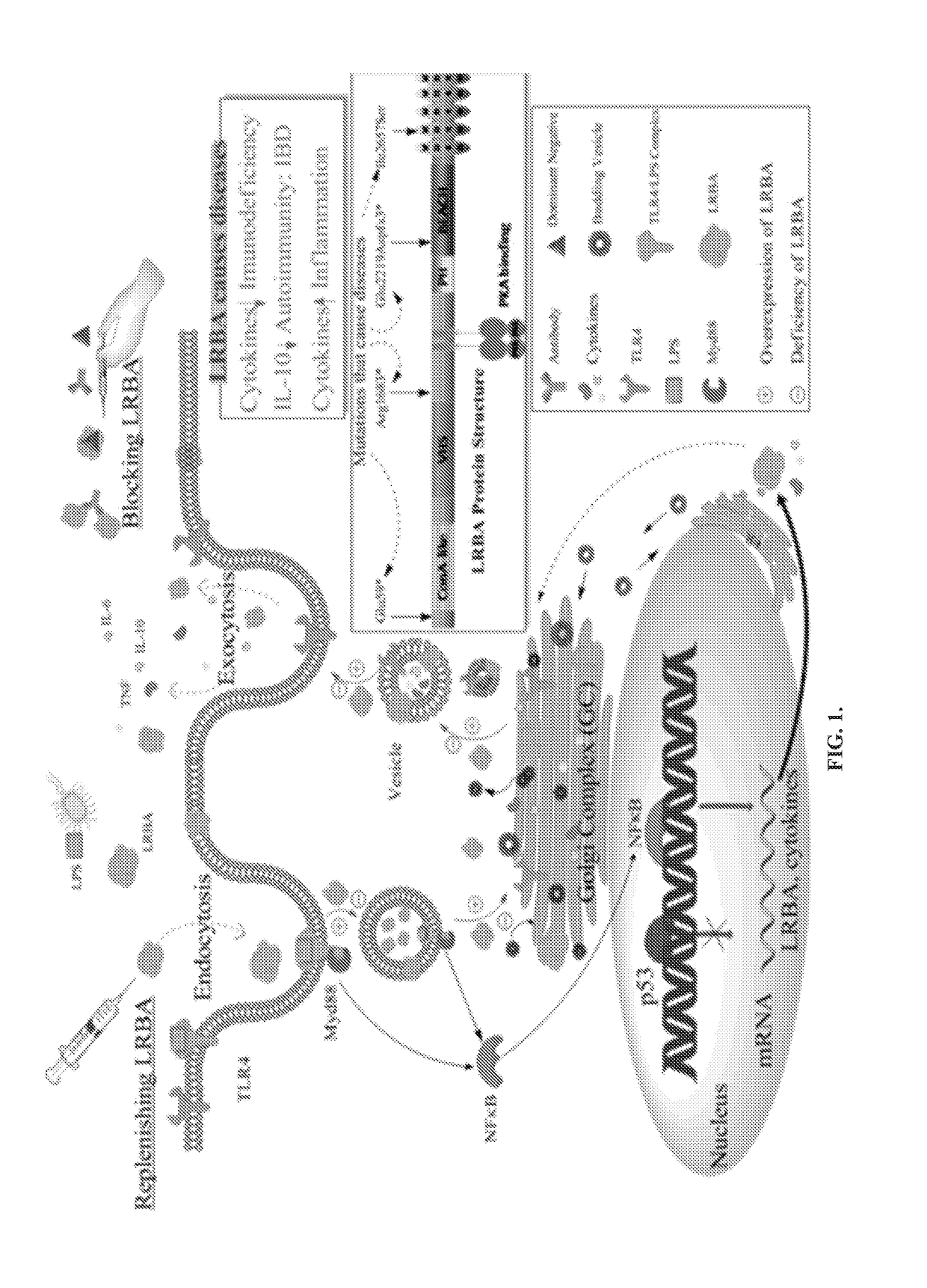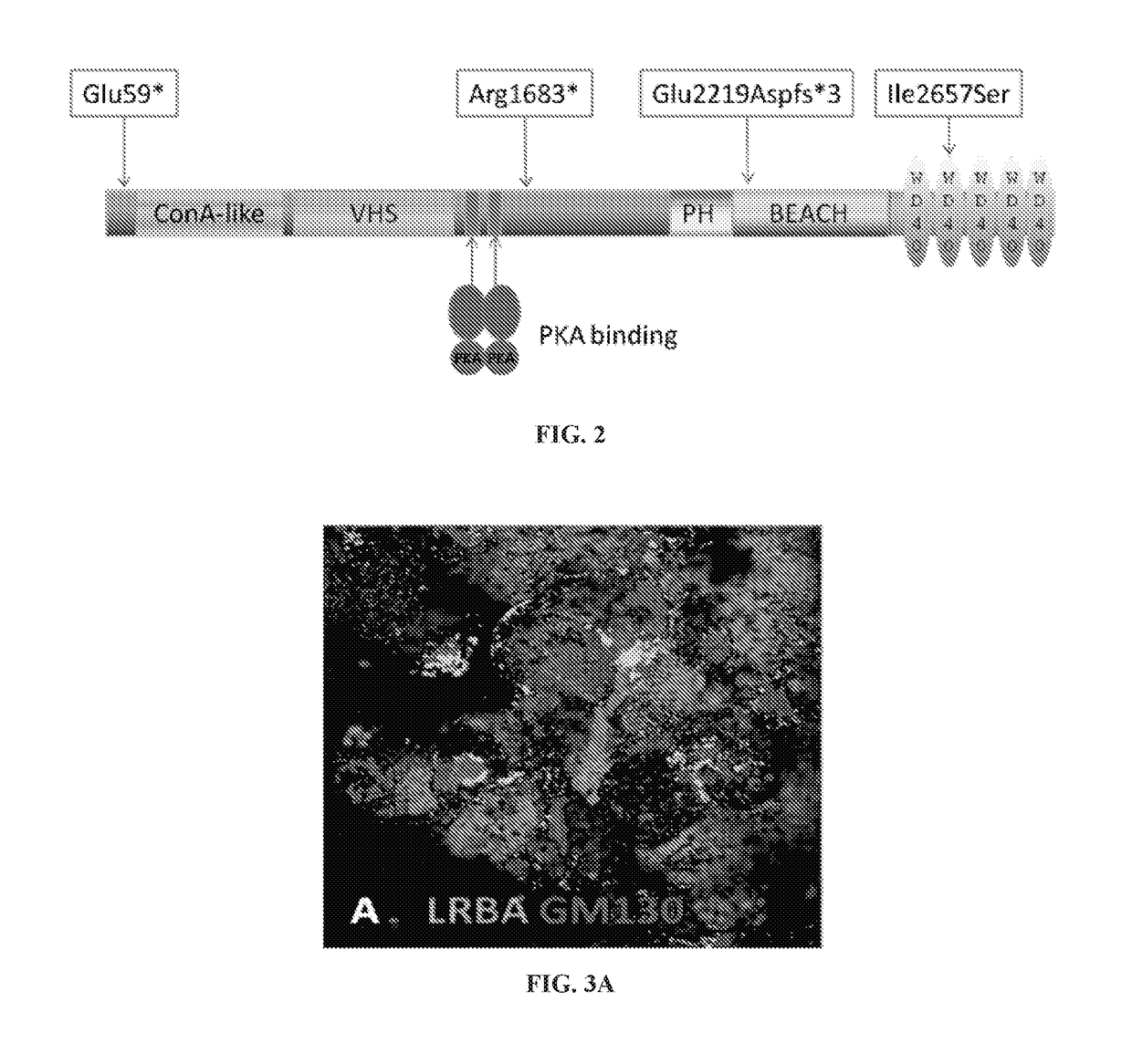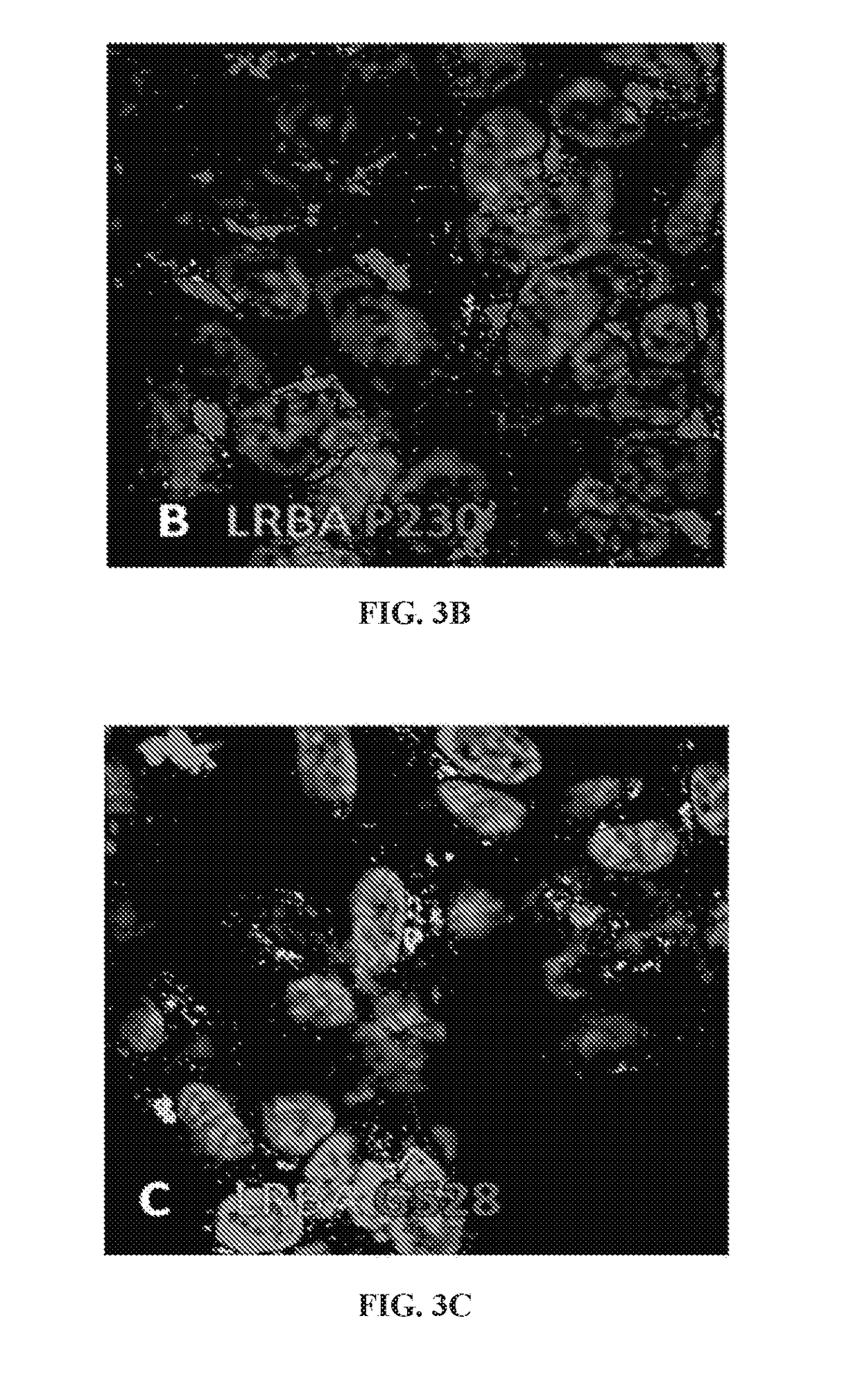Inflammatory disease diagnosis and methods of treatment using lipopolysaccharide-responsive beige-like anchor
a technology of lipopolysaccharide and inflammatory diseases, applied in the field of inflammation, can solve the problems of insufficient inhibition of a single cytokine, patients may eventually become refractory, and the effect of infection hospitalization and infection risk
- Summary
- Abstract
- Description
- Claims
- Application Information
AI Technical Summary
Benefits of technology
Problems solved by technology
Method used
Image
Examples
example 1
[0122]Human and mouse LRBA genes were cloned and sequenced (Wang, et al., Deregulated expression of LRBA facilitates cancer cell growth. 2004. Oncogene 23, 4089-97; Barrat, et al., Defective CTLA-4 cycling pathway in Chediak-Higashi syndrome: a possible mechanism for deregulation of T lymphocyte activation. 1999. Proc Natl Acad Sci USA 96, 8645-50), contributing seven LRBA sequences to GenBank, as seen in NM006726, AF216648, AF188507, AF188506, AF187731, AF188505, AF188504.
[0123]LRBA (Seq ID No. 1) is composed of multiple domains, as seen in FIG. 2. The Concanavalin A-like (ConA) lectin binding domain (Burgess, et al., A concanavalin A-like lectin domain in the CHS1 / LYST protein, shared by members of the BEACH family 2009. Bioinformatics 25: 1219-1222), VHS (Bradshaw, et al., HMMer Thread: detecting remote, functional conserved domains in entire genomes by combining relaxed sequence-database searches with fold recognition. 2011. PloS one 6: e17568) [VPS (vacuolar protein sorting)] (...
example 2
[0152]Lipopolysaccharide (LPS)-responsive beige-like anchor (LRBA) critical in cell proliferation and survival. LRBA was initially identified as an LPS-upregulated gene, with structural similarity to lysosomal trafficking regulator (LYST in human; beige in mouse) and A-kinase anchoring proteins (AKAPs). (Fagerberg, et al., Contribution of Antibody-based Protein Profiling to the Human Chromosome-centric Proteome Project (C-HPP). 2012. J proteome res.; 12(6):2439-48; Freundt, et al., Photoconversion of Lysotracker Red to a green fluorescent molecule. 2007. Cell research 17, 956-958). LRBA deficiency, resulting from homozygous deletion or mutations in LRBA gene, causes common variable immunodeficiency (CVID8) and autoimmunity. LRBA-deficient patients have an array of serious symptoms including hypogammaglobulinemia, antibody deficiency, recurrent bacterial infections, defective B-cell differentiation, decreased or absent antibody production, recurrent infections particularly respirator...
example 3
[0157]Testing was undertaken to determine if absence of LRBA inhibit pro-inflammatory cytokine secretion. The immunodeficiency caused by LRBA deficiency may result from defective cytokine signaling pathways (Leonard, Cytokines and immunodeficiency diseases. 2001. Nat Rev Immunol 1, 200-8; Kovanen, & Leonard, Cytokines and immunodeficiency diseases: critical roles of the gamma(c)-dependent cytokines interleukins 2, 4, 7, 9, 15, and 21, and their signaling pathways. 2004. Immunol Rev 202, 67-83), indicating LRBA is involved in cytokine regulation and TLR activation. Moreover, data show that LRBA is involved in the LPS pathway and most likely serves to facilitate transportation and secretion of cytokines through vesicle trafficking.
[0158]Testing has shown LRBA is involved transcription regulation through translocation to the nucleus upon LPS stimulation, as seen in FIG. 18. LRBA is found to bind NOTCH1 in the nucleus (Yatim, A., Benne, C., Sobhian, B., Laurent-Chabalier, S., Deas, O., ...
PUM
 Login to View More
Login to View More Abstract
Description
Claims
Application Information
 Login to View More
Login to View More - R&D
- Intellectual Property
- Life Sciences
- Materials
- Tech Scout
- Unparalleled Data Quality
- Higher Quality Content
- 60% Fewer Hallucinations
Browse by: Latest US Patents, China's latest patents, Technical Efficacy Thesaurus, Application Domain, Technology Topic, Popular Technical Reports.
© 2025 PatSnap. All rights reserved.Legal|Privacy policy|Modern Slavery Act Transparency Statement|Sitemap|About US| Contact US: help@patsnap.com



